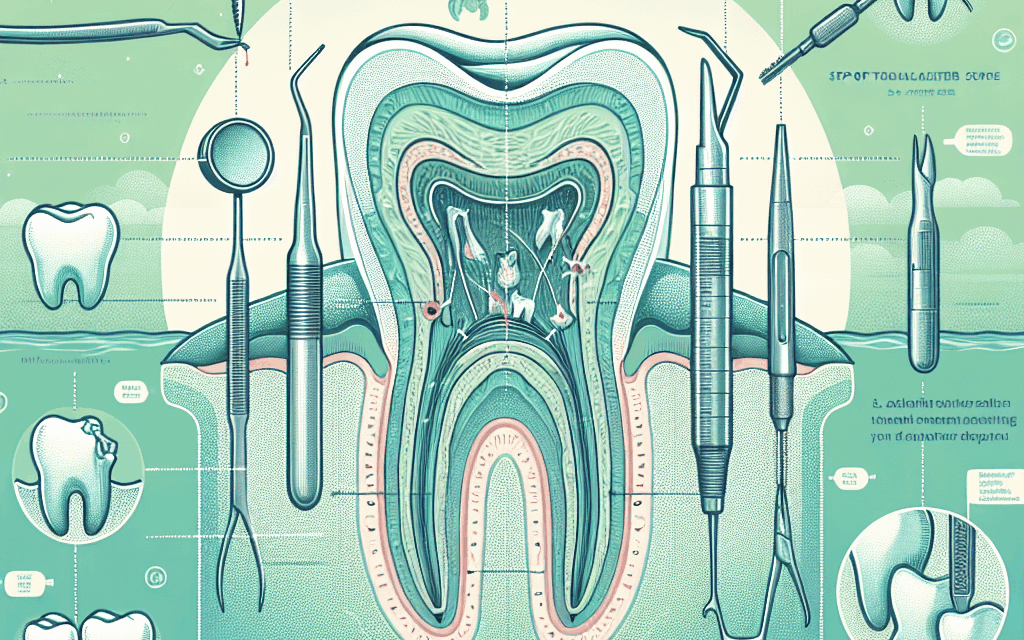A Guide to Tooth Extraction in River Edge: What You Need to Know
Tooth extraction is a common dental procedure that many people may face at some point in their lives. Whether due to decay, overcrowding, or other dental issues, understanding the process, reasons, and aftercare for tooth extraction is crucial. This guide aims to provide comprehensive information about tooth extraction in River Edge, covering everything from the reasons for extraction to the recovery process.
1. Understanding Tooth Extraction
Tooth extraction is the process of removing a tooth from its socket in the bone. This procedure can be performed by a general dentist or an oral surgeon, depending on the complexity of the case. There are two main types of tooth extractions: simple and surgical.
1.1 Simple Extractions
A simple extraction is typically performed on a tooth that is visible above the gum line. The dentist will use local anesthesia to numb the area around the tooth, making the procedure relatively painless. The dentist will then loosen the tooth using an instrument called an elevator and remove it with forceps.
1.2 Surgical Extractions
Surgical extractions are more complex and are usually required for teeth that are not easily accessible, such as impacted wisdom teeth. This procedure may involve making an incision in the gum to access the tooth and may require general anesthesia or sedation. Surgical extractions often take longer and may involve a more extended recovery period.
1.3 Reasons for Tooth Extraction
There are several reasons why a tooth may need to be extracted:
- Severe Tooth Decay: When a tooth is extensively decayed and cannot be restored with a filling or crown.
- Periodontal Disease: Advanced gum disease can lead to tooth mobility and loss.
- Overcrowding: In orthodontic cases, teeth may need to be removed to create space for proper alignment.
- Impacted Teeth: Wisdom teeth that do not have enough space to emerge can become impacted, leading to pain and infection.
- Trauma: Teeth that are fractured or damaged due to injury may need to be extracted.
2. The Tooth Extraction Process
The tooth extraction process can vary depending on the type of extraction and the individual patient’s needs. Understanding what to expect can help alleviate anxiety and prepare you for the procedure.
2.1 Pre-Extraction Consultation
Before the extraction, you will have a consultation with your dentist. During this appointment, the dentist will:
- Review your medical history and any medications you are taking.
- Perform a thorough dental examination, including X-rays, to assess the tooth and surrounding structures.
- Discuss the extraction procedure, including anesthesia options and what to expect during recovery.
2.2 Anesthesia Options
To ensure your comfort during the extraction, your dentist will discuss anesthesia options. Common choices include:
- Local Anesthesia: Numbs the area around the tooth while you remain awake.
- Sedation: Helps you relax and may cause you to have little memory of the procedure.
- General Anesthesia: Used for surgical extractions, making you completely unconscious during the procedure.
2.3 The Extraction Procedure
On the day of the extraction, you will arrive at the dental office and be prepared for the procedure. The dentist will administer the chosen anesthesia and begin the extraction. For simple extractions, the process typically takes about 20-40 minutes, while surgical extractions may take longer.
2.4 Post-Extraction Care
After the extraction, you will receive specific aftercare instructions to promote healing and minimize discomfort. This may include:
- Applying ice packs to reduce swelling.
- Taking prescribed pain medications or over-the-counter pain relievers.
- Avoiding strenuous activities for a few days.
- Eating soft foods and avoiding hot or spicy foods.
3. Recovery After Tooth Extraction
The recovery process after a tooth extraction is crucial for ensuring proper healing and minimizing complications. Understanding what to expect can help you navigate this period more comfortably.
3.1 Immediate Aftercare
Immediately following the extraction, it is normal to experience some bleeding. Your dentist will place a gauze pad over the extraction site to help control bleeding. You will be instructed to bite down gently on the gauze for about 30-45 minutes. If bleeding persists, you may need to replace the gauze and continue applying pressure.
3.2 Managing Pain and Discomfort
Pain and discomfort are common after tooth extraction. Your dentist may prescribe pain medication or recommend over-the-counter options. It is essential to follow the dosage instructions carefully. Additionally, using ice packs on the outside of your cheek can help reduce swelling and numb the area.
3.3 Diet and Nutrition
During the first few days after the extraction, it is advisable to stick to a soft food diet. Foods such as yogurt, applesauce, mashed potatoes, and smoothies are excellent choices. Avoid hot, spicy, or crunchy foods that could irritate the extraction site. Staying hydrated is also crucial, but avoid using straws, as the suction can dislodge the blood clot and lead to a painful condition known as dry socket.
3.4 Signs of Complications
While most recoveries are straightforward, it is essential to be aware of potential complications. Contact your dentist if you experience:
- Severe pain that worsens after a few days.
- Excessive bleeding that does not subside.
- Signs of infection, such as fever or pus discharge.
- Swelling that does not improve after a few days.
4. Cost of Tooth Extraction in River Edge
The cost of tooth extraction can vary significantly based on several factors, including the type of extraction, the dentist’s experience, and whether additional procedures are required. Understanding the potential costs can help you plan accordingly.
4.1 Average Costs
In River Edge, the average cost for a simple tooth extraction ranges from $75 to $300, while surgical extractions can cost between $150 and $650 or more. Factors that influence these costs include:
- The complexity of the extraction.
- The need for anesthesia or sedation.
- Additional treatments, such as bone grafting or sutures.
4.2 Insurance Coverage
Many dental insurance plans cover a portion of the cost of tooth extractions, especially if they are deemed medically necessary. It is essential to check with your insurance provider to understand your coverage and any out-of-pocket expenses you may incur.
4.3 Payment Options
If you do not have insurance or if your plan does not cover the full cost, many dental offices offer payment plans or financing options. Discussing these options with your dentist can help make the procedure more affordable.
4.4 Cost Comparison
When considering tooth extraction, it may be helpful to compare costs among different dental practices in River Edge. Factors to consider include:
- The dentist’s qualifications and experience.
- The technology and techniques used in the practice.
- Patient reviews and satisfaction ratings.
5. Choosing the Right Dentist for Tooth Extraction
Choosing the right dentist for your tooth extraction is crucial for ensuring a successful procedure and a smooth recovery. Here are some factors to consider when making your decision.
5.1 Qualifications and Experience
When selecting a dentist, it is essential to consider their qualifications and experience in performing tooth extractions. Look for a dentist who has completed additional training in oral surgery or has extensive experience with extractions, particularly if you require a surgical extraction.
5.2 Patient Reviews and Testimonials
Reading patient reviews and testimonials can provide valuable insights into a dentist’s practice. Look for feedback regarding the dentist’s communication style, the comfort level of patients during procedures, and the overall quality of care provided.
5.3 Office Environment and Technology
The environment of the dental office can significantly impact your experience. A clean, modern office equipped with the latest technology can enhance your comfort and safety during the procedure. Consider scheduling a consultation to assess the office environment and meet the staff.
5.4 Accessibility and Convenience
Consider the location of the dental practice and its accessibility. A conveniently located office can make it easier to attend appointments and follow-up visits. Additionally, check the office hours to ensure they align with your schedule.
5.5 Cost and Insurance Compatibility
Finally, consider the cost of services and whether the dentist accepts your insurance plan. It is essential to have a clear understanding of the costs involved and any payment options available before proceeding with the extraction.
Conclusion
Tooth extraction is a common dental procedure that can be necessary for various reasons, including decay, overcrowding, and trauma. Understanding the extraction process, recovery, costs, and how to choose the right dentist can help you navigate this experience with confidence. Remember to prioritize your oral health and seek professional advice if you have concerns about your teeth. By being informed and prepared, you can ensure a smoother extraction process and a quicker recovery.
In River Edge, there are many qualified dental professionals ready to assist you with your tooth extraction needs. Whether you are facing a simple extraction or a more complex surgical procedure, knowing what to expect can help alleviate anxiety and promote a positive experience. Always consult with your dentist for personalized advice and care tailored to your specific situation.





